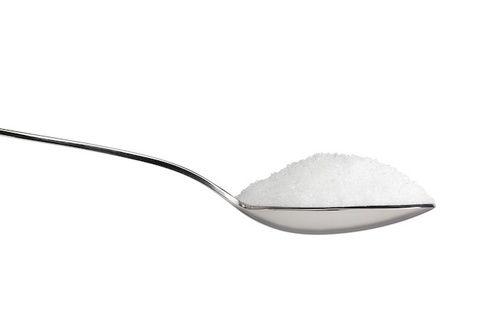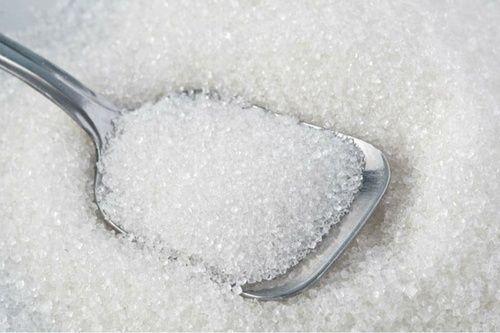Lo XNUMX/XNUMX cup sugar, or sucrose, is a disaccharide that affects both nervous system than on the metabolism and which can generate a real one dependence. Let's find out better.
> 1. What is sugar?
> 2. How the extraction takes place
> 3. Effects of sugar on the human body

What is sugar
By "sugar" we mean the sucrose, disaccharide formed by a glucose molecule and a fructose molecule.
It is derived from sugar cane (plant grown in Central and South America) and from sugar beet (plant grown in Europe).
Sugar beet is a variety of Beta vulgaris, a herbaceous plant of the Chenopodiacee family. In the early days of cultivation, chard contained only 5-6% sugar but with a rational selection, which lasted over a century, an average of 15% was reached.
Sugar cane (Saccharum officinarum) is instead a tropical plant of the Poaceae family, with a very sweet and juicy marrow. Panela sugar (bread sugar) has been the main sweetener used by the local population since colonial times in Latin America.
Despite the great development achieved by the sugar industry, panela continues to occupy an important place, both in the humblest sectors of the population and in industry.
How does sugar extraction take place?
For these two plants the extraction processes are different, while purification, concentration, refining and crystallization follow the same path.
- Quarrying: sugar canes are cut and squeezed by passing them through rollers that extract the juice. A syrup or syrup is thus obtained molasses which is made to settle and then concentrated by evaporating almost all the water. What results is it whole cane sugar (the best in terms of nutrition!). To extract sugar from beets, however, they are boiled at about 80 ° C for a very long time. The syrup thus obtained is always concentrated by evaporation of the water. The industrial extraction of beet sugar posed some technical problems; unlike cane sugar, already present in solution, in beets the sugar is contained in the cells of the tuber and must be extracted with water by osmosis through the cell walls. The extraction was facilitated by cutting the beets into thin strips about one centimeter wide and about ten centimeters long.
- Purification and concentration: the whole sugar, whether it be cane or beet, is now purified with milk of lime at high temperatures and quicklime. The alkaline reaction and cooking cause the destruction of vitamins, proteins, enzymes and the precipitation of calcium salts. To then eliminate the excess lime, the sugary juice is treated with carbon dioxide. It is then bleached in a process of continuous cooking, cooling, crystallization and centrifugation. The product thus obtained is lo raw sugar, brownish and coarsely crystallized.
- Refining and crystallization: raw sugar is treated with animal carbon and sulphurous acid to filter it and further decolor it. Finally, it is then colored with a dye extracted from tar (E130) obtaining the classic white sugar.
From 100 kg of beets, about 15 kg of crystalline sucrose and about 5 kg of molasses are obtained, which still contain about two and a half kilos of sugar.
You can learn more about the damage of white sugar on the body

Effects of sugar on the body
White sugar needs vitamins and minerals to be digested. Since these substances have been eliminated during the refining process, the only available source are those that are already in our body (taken from tissues and bones).
The consequences of this digestive process are the loss of calcium in the teeth and bones, with weakening of the skeleton and dentition.
Sucrose, in addition to having this effect demineralizing on the body, at the same time decreases the effectiveness of white blood cells and causes imbalances in the immune system (when we eat 50g of white sugar, the phagocytic capacity of white blood cells is reduced by 76% for about 7 hours).
White sugar has a great influence on both the nervous system and the metabolism, creating first stimulation then depression with consequent states of irritability, false euphoria, the need to take more sugar, etc. This is caused by the rapid and violent absorption of sugar into the blood which raises the so-called blood sugar.
Faced with this sudden rise, the pancreas responds by entering insulin in the blood and this causes a sudden drop in the glycemic rate called "hypoglycemic crisis" characterized by a state of malaise, sweating, irritability, aggression, weakness, the need to eat to feel up again. To counteract this stressful situation, the body then secretes other hormones to bring blood sugar to optimal levels, including adrenaline, the hormone of fear and aggression.
This "sugar-mania" is a real psychological and physical addiction that generally develops during childhood and often results in the consumption of other substances during adulthood (coffee, alcohol, tobacco, etc.).
Curiosities about sugar
Due to its properties, sugar is used in the food industry also in food preservation. The use of sugar, as well as that of salt (dry or in brine) or alcohol, determines in foods an effect similar to the removal of water and results in a preservative action.
In fact, the salt and sugar bind to the water present making it unusable for potentially harmful microorganisms. White sugar is, in fact, one of the very rare foods that has no expiration date and this means that no bacteria can use it or, at the most, can absorb the humidity it contains.
There are different types of sugar on the market:
- whole cane sugar, with a pasty and dark appearance, which is 100% concentrated cane juice and which, not undergoing chemical treatments, retains most of the vitamins, minerals (also trace elements), etc;
- raw sugar, with an aspect that can be deceiving, it has undergone chemical treatments in the purification phase, removing most of the nutrients (it should be known that often, to accentuate the brownish color, raw sugar is treated with ammonia caramel E150);
- refined or white sugar which is pure sucrose and therefore pure energy not accompanied by vitamins and minerals that remain intact in the whole sugar.
READ MORE
Stevia, a valid substitute for sugar in sweet recipes
Other articles on sugar:
> Sugar, the dark poison
> How much sugar do you eat?
> The effects of sugar addiction
> Birch xylitol, an alternative to sugar?
> How Meat and Sugar Affect Temperament
> Sugar beet, properties


























